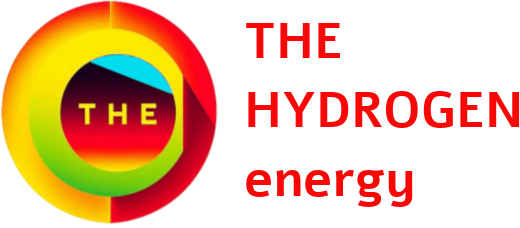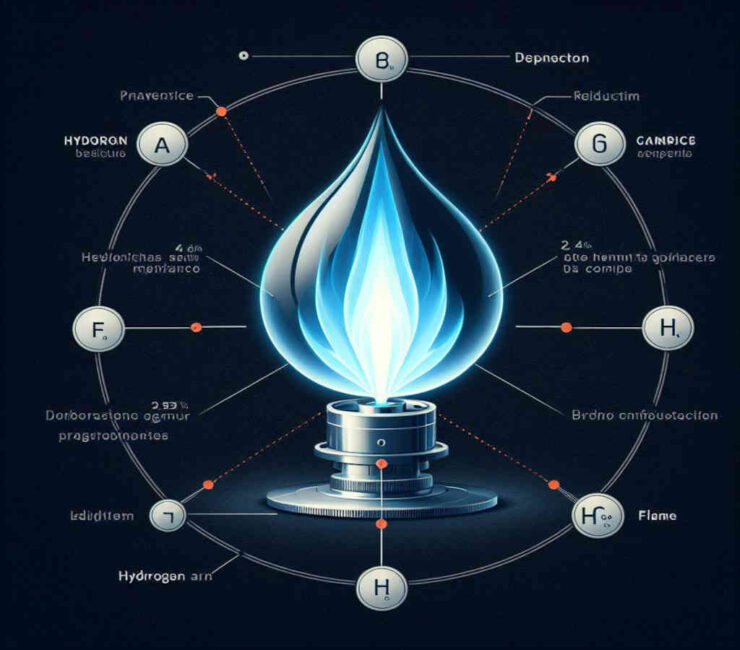Hydrogen flame color or color of the flame when hydrogen burns in air or color of hydrogen fire in air at normal temperature and conditions in day to day life.
In normal air, Hydrogen burns with a pale blue flame that is nearly invisible during daylight hours, making fires extremely challenging to detect with the naked eye. The flame may appear yellow if there are impurities in the air like dust particles, carbon or sodium from ocean air or other burning materials will introduce color to the hydrogen flame.
- There is no smoke produced during H2 burning in air (oxidation), only water vapour, which is also invisible
- Pure hydrogen flame color: Pale blue
- Visibility: Can be faint, especially in bright light
- At night, hydrogen flames are visible
- Reason for yellow tinge: Impurities in the air
- The pale blue color isn’t due to isolated emission lines of hydrogen atoms.
- It’s a result of excited molecules emitting a broad spectrum of light, with our eyes perceiving the dominant blue wavelengths.
- Impurities (sodium, sulfur, carbon, dust particles) can alter the perceived color of the flame.
We need to know some key physical aspects of hydrogen to understand clearly:
- Hydrogen is approximately 14 times lighter than air and 57 times lighter than gasoline vapor
- Hydrogen’s flammability range (between 4% and 75% in air) is very wide compared to other fuels (LPG, Natural gas, gasoline vapour, etc.,). Thus can ignite over a wide range of concentrations in air
- Hydrogen is a very small molecule with low viscosity and therefore prone to leakage
- It is impossible for human senses to detect hydrogen as hydrogen has no smell, taste, color
- It is non-toxic. The primary health hazard is asphyxiation by displacement of oxygen
- Consequently, when released in an open environment, hydrogen tends to ascend and disperse rapidly, this property provides a safety advantage in outdoor settings
It is important to recognize that hydrogen combustion occurs more rapidly than the combustion of other fuels. When a hydrogen cloud (from a leak) is ignited, it will burn within seconds, releasing all the energy stored in the cloud.
Why not we use an odorant, like the way used in home LPG/CNG?
While highly flammable natural gas or LPG is inherently the same odorless, the industry intentionally adds a sulfur-containing odorant to these gases. This addition allows people to detect gas leaks promptly. However, when it comes to hydrogen, odorants are not currently used. The challenge lies in finding odorants that are light enough to disperse or travel along with hydrogen at the same rate. Additionally, existing odorants can contaminate fuel cells, which are a crucial application for hydrogen technology.
Within a confined space, hydrogen leaks can accumulate and reach flammable concentrations. It’s important to note that any gas other than oxygen becomes an asphyxiant at sufficient concentrations. Though hydrogen is non-toxic, the primary health hazard is asphyxiation by displacement of oxygen. In closed environments, even small leaks pose a risk because hydrogen is imperceptible to human senses and can ignite across a broad range of concentrations in the air.
Hydrogen flames emit minimal infrared (IR) heat while producing considerable ultraviolet (UV) radiation. This implies that a person near a hydrogen flame would feel minimal heat, which raises safety concerns due to the risk of unintentional contact with the flame. Overexposure to UV radiation is another issue, as it can cause effects similar to sunburn.
To address these hazards, proper ventilation and the use of advanced hydrogen detection sensors are crucial.
This article is Copyright protected







Add comment